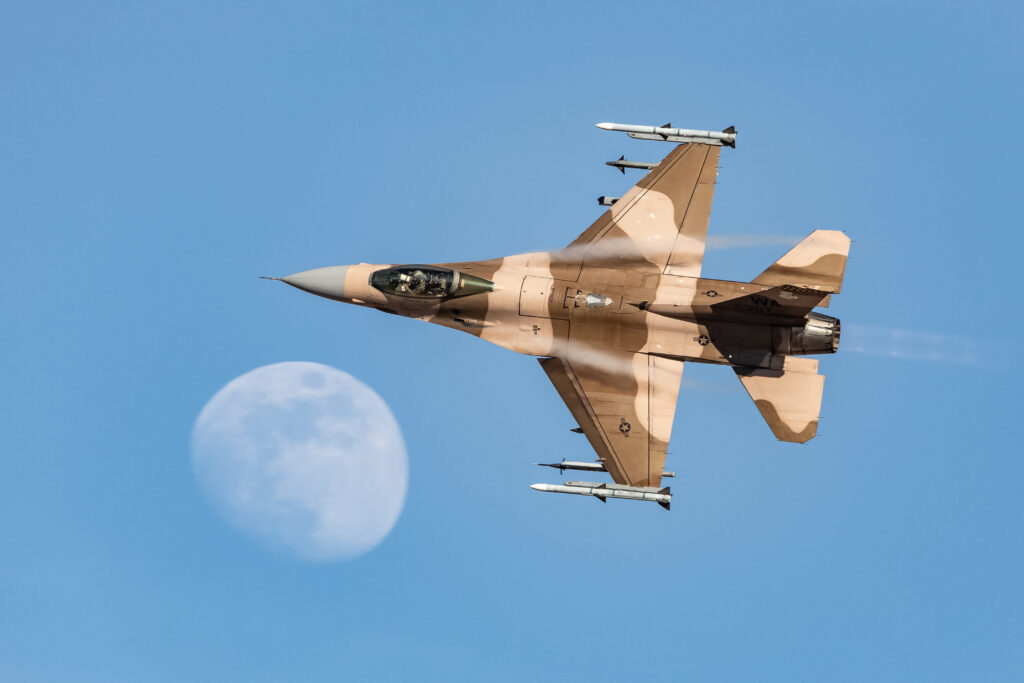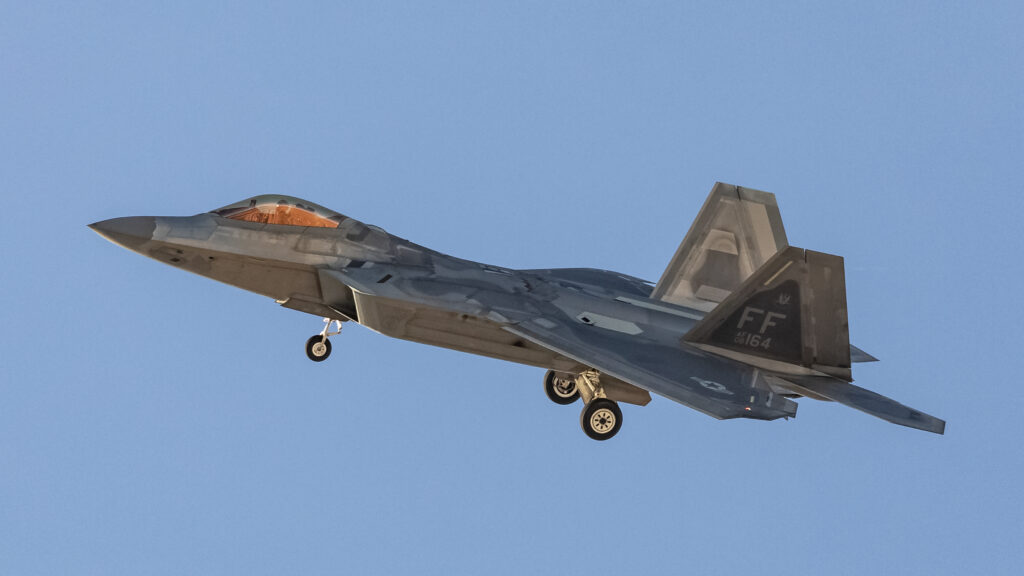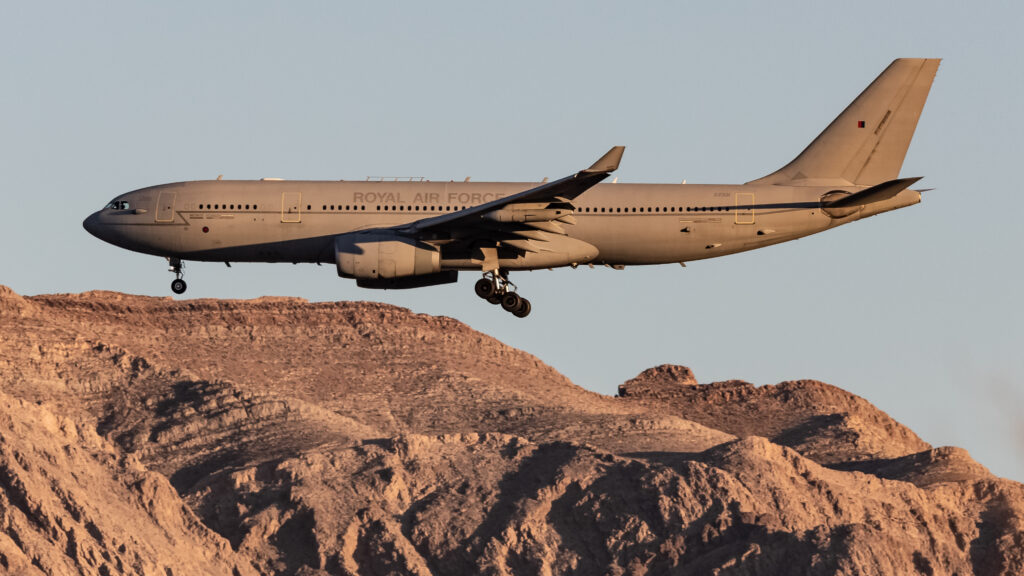Estimated reading time 7 minutes, 58 seconds.
The first Red Flag-Nellis exercise of 2023 is coming to a close. Dubbed Red Flag 23-1, the almost three-week training exercise kicked off on Jan. 23 and runs until Feb. 10. Roughly 100 aircraft and 3,000 personnel participated in the exercise held at Nellis Air Force Base on the Nevada Test and Training Range — which includes operational airspace nearly the size of Switzerland.
Nellis Air Force Base has hosted Red Flag exercises since 1975. The exercises put U.S. airpower, international allied air forces, ground units, controllers, planners, maintainers, ordnance, and adversary air into realistic combat situations.

Following the U.S. involvement in the Vietnam War, a gap in tactics and training was identified, and the concept of Red Flag was formed to make the U.S. Air Force (USAF) and its allies a superior force against any threat. The Red Flag exercise provides pilots, planners, and crews with real-world missions and opponents in a friendly environment, with the goal of building a combat-ready force. (A study performed by the USAF in the 1960s showed a significant increase in the survivability of crews after their 10th mission; realistic combat simulation can provide that experience with minimized risk.)
The scenarios include the objective, mission planning, resource planning, threat analysis, weapon selection, weather, topography, and alternate plans — all while factoring in multiple platforms, services, and intelligence sources.
The theme for Red Flag 23-1 was the Indo-Pacific Theater of operations. In addition to the U.S. Air Force, Navy, Marines, Space Force and Air National Guard, participants included forces from partner nations like the Royal Air Force and the Royal Australian Air Force.

Some of the participating aircraft at Red Flag 23-1 included:
- USAF E-3 Sentry AWACS providing command and control, and RC-135 Rivet Joint providing electronic Intelligence, Surveillance, and Reconnaissance (ISR);
- USAF HC-130 Combat King and HH-60 Combat SAR/Extraction (CSAR);
- USAF F-22 Raptors, RAF Eurofighter Typhoons, and USAF F-35s providing top cover air superiority;
- USAF A-10 Warthogs and USMC F-35B in close air support;
- USAF F-15 Strike Eagle and F-16s, and U.S. Navy F-18Fs in interdiction roles with precision munitions;
- USAF B-52 heavy bombers (4);
- USAF KC-135s and an RAF Voyager KC2 tanker providing fuel to the combatants;
- Royal Australian Air Force and U.S. Navy with EA-18G Growlers in the electronic warfare role;
- Space Force providing jamming, situational, visual, and electronic intelligence; and
- Remote observation, targeting, and strike simulation via remotely piloted drone assets.
B-2 Spirit bombers were scheduled to participate in Red Flag 23-1, but they are on operational pause due to an incident in December 2022. The crews, however, were in attendance, providing virtual B-2 mission planning. Two additional B-52s were stationed at Nellis to replace the absent stealth bombers.

Flight paths, targeting, and friendly and aggressor kills are all tracked electronically in real time and debriefed after each mission. Two missions are typically flown — one during the day, and one at night — five days a week, with upwards of 50 aircraft participating per scenario.
When Red Flag 23-1 first kicked off, Col Jared Hutchinson, 414th Combat Training Squadron commander, said: “This year is expected to be challenging as it prioritizes young operators. It enables them to learn in the world’s best combat training environment while writing the next chapter of our resilient heritage.”
Aggressor or “Red Air” training provides realistic threats to the friendly forces by simulating enemy tactics and profiles. F-16s are the most visible aggressors with unique enemy paint schemes. Enemy Integrated Air Defense is simulated with ground-based, mobile, and fixed anti-aircraft gunnery, missile, and radar stations. F-35s have joined the aggressor squadron to provide the latest fifth-generation threat to the allied forces.

Recently, in coordination with the Federal Aviation Administration, the theater of operations airspace has tripled to nearly 36,000 square miles — now encompassing parts of California and Utah — to provide real-world distances for the latest beyond-visual-range sensors and weapon systems.
The range is divided into five zones: Red, enemy territory; Blue, friendly territory; Orange, the contested area; Green, the designated ground close air support area; and Black, a safe area for the aggressors to regroup and refuel.
Missions typically last three to four hours. The tanker and intelligence aircraft launch first to be on station, followed by fighter top cover, then interdiction and close air support aircraft and, finally, the extraction aircraft after a safe pathway is cleared.

Over the course of the exercise, over 7,000 flight hours and countless planning and de-brief hours will have been accumulated to ensure the operational readiness of the current and future integrated forces. This is just one of multiple Flag exercises conducted each year across North America.









It would appear the RCAF didn’t participate this year. What gives?
Tucker Carlson wouldn’t allow it.